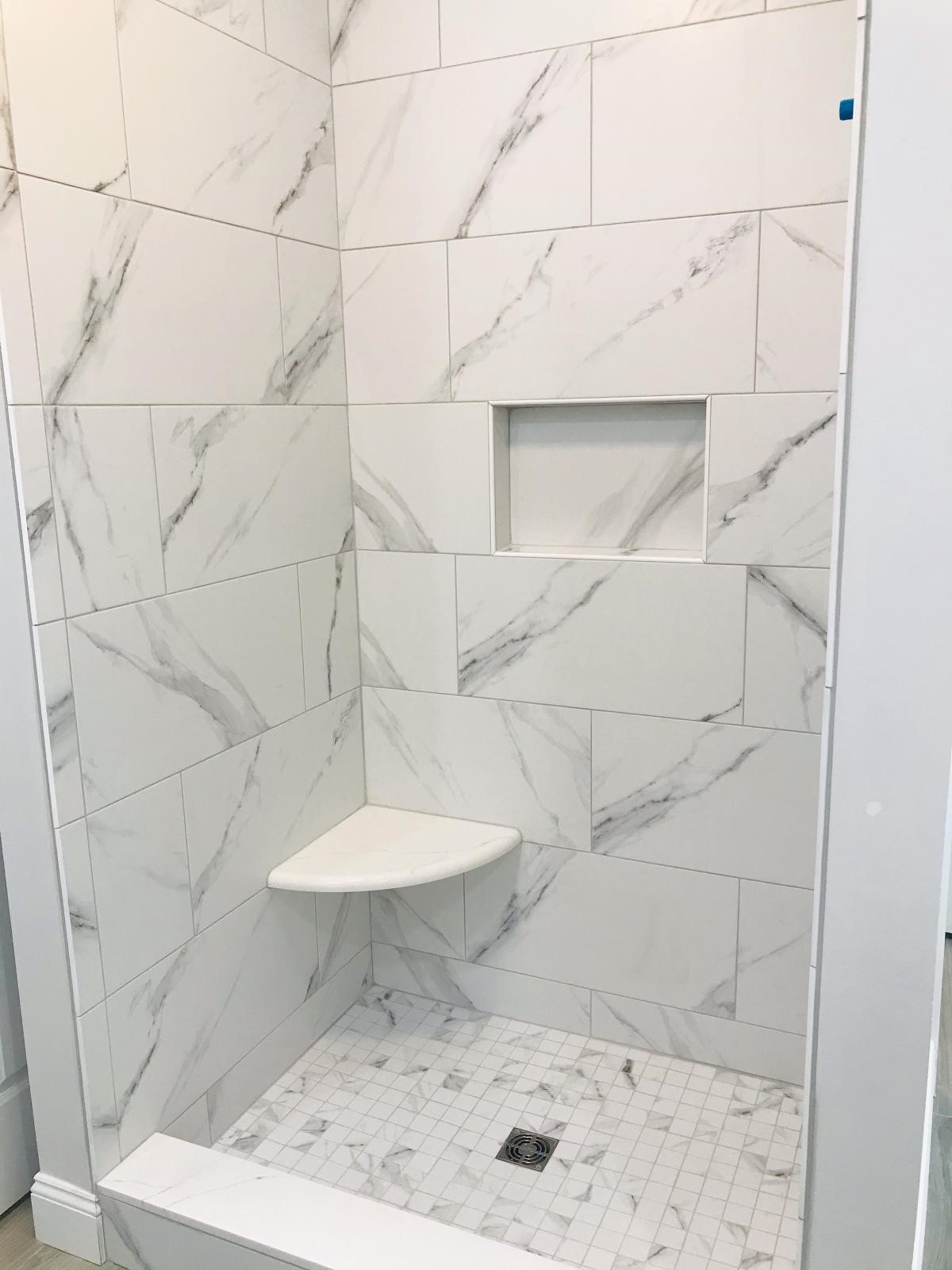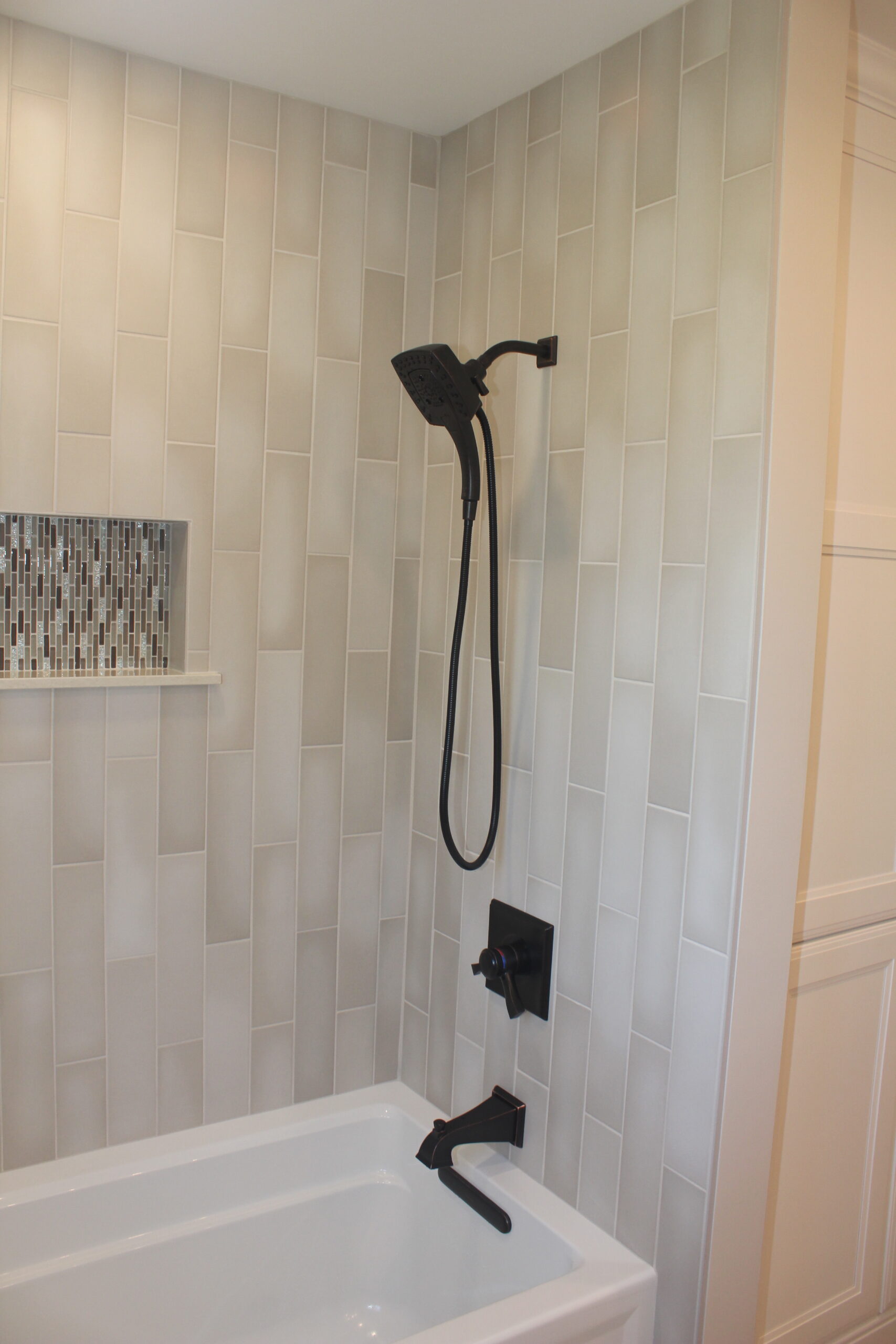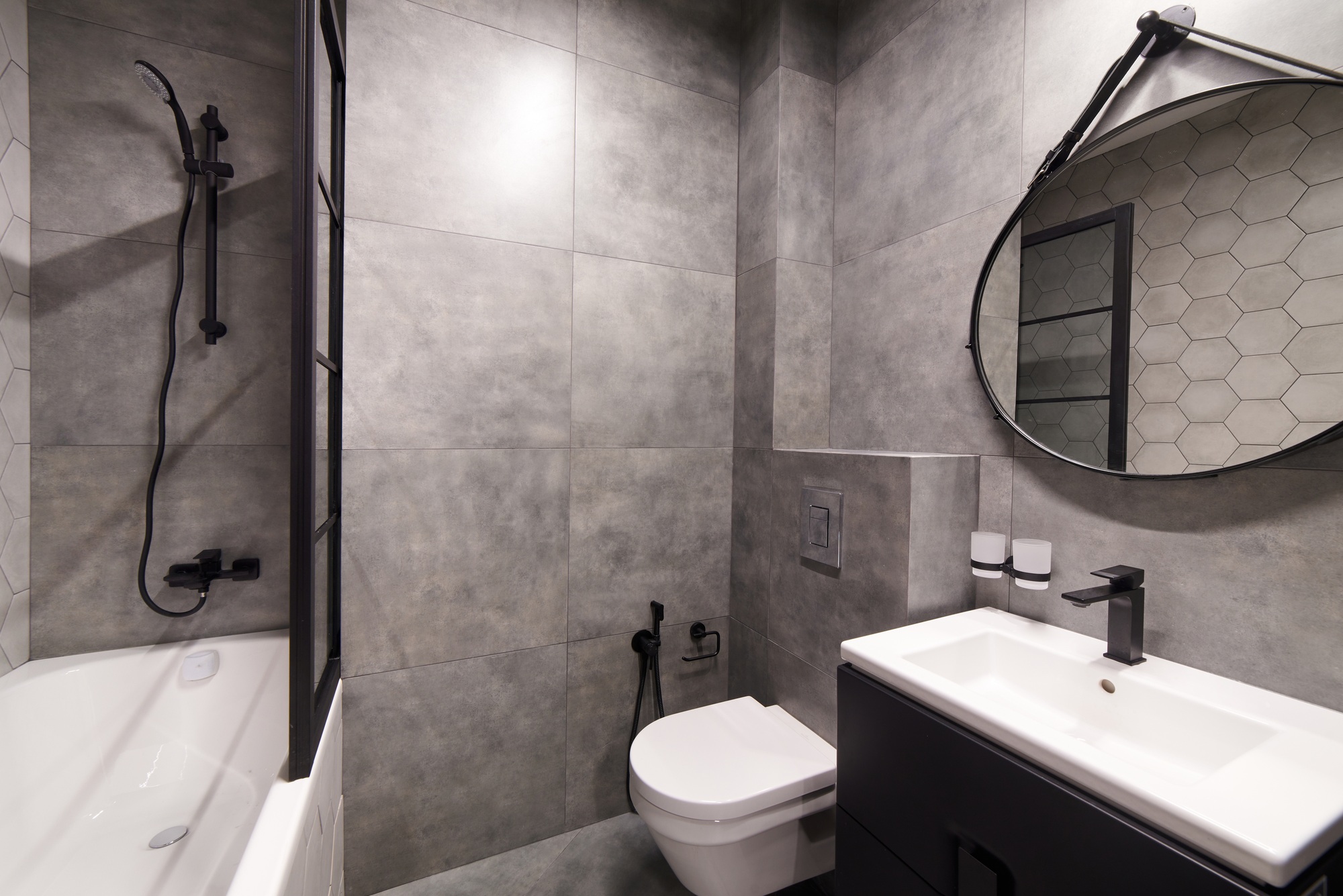When planning a bathroom remodel, there’s a lot to consider. From functional decisions to plumbing to replacement products to tile, here’s everything you need to think about.
Whether you’re renovating a smaller space in an older home or dreaming up a spa suite in a master bath, the bathroom is an important space and one of the most used rooms in your home. So, there are a lot of key decisions you will have to make when planning a bathroom remodel.
To make it easier, we put together this checklist of essentials for homeowners.
FUNDAMENTAL QUESTIONS
First, ask yourself these fundamental, functional questions to get a better vision for what direction to take your bathroom remodel.
#1. Who will use the bathroom?
This answer matters because if you have young kids, you may consider certain more durable and kid-friendly bathtub and shower products over others. Seniors may want an ADA-compliant bathroom plan.
#2. Will there be multiple users at one time?
If so, plan on separate vanity spaces with privacy for the water closet.
#3. Will you remove and replace fixtures in the same location, or rearrange the space for a better layout and function?
The answer to this question will tell you how in-depth your planning will need to be and if you need to bring in professional designers or not.
#4. Will you be doing the remodel yourself?
This is another fundamental question that will inform you on the necessary level of planning and professional involvement.
PRE-PLANNING QUESTIONS
These pre-planning questions will help you with the logistics of your remodel.
#5. Do you have an available and reputable licensed contractor who will pull the permits?
Before you demo, you will likely need a contractor. The permits you may need depend on your township’s laws, so be sure to check what those are.
#6. Do you have a professional bathroom designer or interior designer to space plan a new layout?
If you’re not confident to DIY, consider hiring a professional designer to help you make the most of your new space.
PLANNING QUESTIONS
Now we’re getting into the logistics. Here are important planning questions you should answer.
#7. When do you need to accomplish the remodel?
Establish a realistic timeline—especially if you only have one bathroom. Chances are, you will need to plan months far in advance.
#8. What are your wish list items’ lead times?
Make a wish list of what type of products you want for your bathroom remodel. Then consider your timeline. Special order items take time, so check your wish list’s lead time availability well in advance.
Here is a list of products you might intend to replace, including but not limited to:
- Tile for floors, walls, shower and ceiling
- Grout and trim
- Shower door
- Bathroom lighting
- Mirrors
- Cabinetry and countertops
- Sinks
- Bathtub and shower fixtures and faucets
- Ventilation
- Paint
- Accessories
Make sure the paint, cabinetry, countertops, fixtures, faucets and more play well together, especially if you have a theme. Colors can be complementary or contrasting—it’s all up to your design preference.
PLANNING TIPS
After you answer the prior questions, consider the following tips to set up your project for success:
#9. Send your project to the professionals for bidding.
Once you have a layout floor plan accomplished and customized to your liking, send your project to the professionals for bidding if you’re a DIY’er. You will need a plumbing plan, electrical plan and floor plan so you can get the correct materials ordered on time.
#10. Read the fine print.
Who will pick up or deliver new materials? Who will dispose of the old materials? Who is doing the demo and installation—and when?
#11. Order everything before demolition.
Make room to store materials before the job is supposed to begin. Then, have everything ordered and delivered in advance of demolition. This will help you stay on track when demolition begins because you don’t have to wait on products.
TILE TIPS
Finally, let’s talk tile—usually a major part of a bathroom remodel that deserves special attention.
#12. Pick a tile type and material.

To decide, get inspired and look through some idea books. Check out before and after idea catalog galleries online or visit your local kitchen & bath dealer showrooms. Patterns are interesting too but consider that you will be keeping this area active for decades.
Ceramic and glass are great options for wall areas only; however, porcelain or stone can be used on the floor and wall.
Ask questions of friends and professionals who have done such projects recently for guidance and to know what to expect.
#13. Pick a color pallet.
Most bathroom remodels occur every 15-25 years. So, pick a color pallet that you are confident will give you a long-lasting look. You can pick a playful theme or something fancier—and anything in between.
#14. Consider care and maintenance.
Everyone seems to be concerned about cleaning and grout issues. But if you choose a stain-resistant type of grout or a topical grout sealer once the new grout has dried, you won’t have to worry.
Note: You will want to use a sealer on your crackled tile or stone tiles prior to using it in a wet area such as a shower or sink splash.
#15. Consider scope of work and budget.
Remember, labor costs will change with the type of materials and will vary depending on the product’s scope of work.
For example, a heated tile floor is going to add value and comfort but at a higher price point. However, it’s well worth the investment over floors that are not heated.
Ultimately, you get what you pay for. Be sure to ask about your options prior to getting bids so you avoid having regrets. Not all bids are created equal. Project managers are the experts working in the field every day and will be able to help answer any questions.
#16. Expect unforeseen water damage.
In a bathroom space, expect that you might find some hidden unforeseen water damage. Your contractor will need to remedy this if there is mold or rotted spots from water damage.
#17. Know your installation limitations.
Not all tile is created equal—and neither are your installers. For those DIY’ing, know your own limitations.
For those working with professionals, establish expectations upfront. A typical professional will tell you in advance if the installation may take a full week or two depending on what’s involved.
In the end, the results will be long-lasting for decades of use and, if planned properly, low maintenance.
Planning a Bathroom Remodel: Conclusion
There’s a lot that goes into planning a bathroom remodel. From fundamental considerations to logistics to the details like tile and countertops, you have to make a lot of decisions. This checklist will help you figure out the most important pieces to start turning your dream into a reality.
Ready to get started? Schedule a visit to the Eastern Surfaces showroom to explore all your countertop and tile options that will make an impact on your bathroom remodel.




